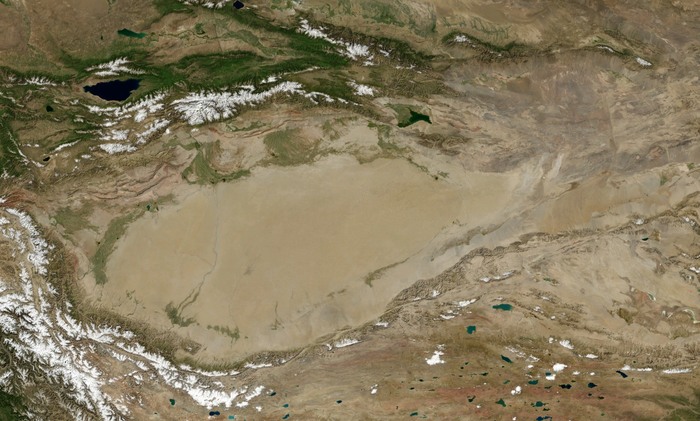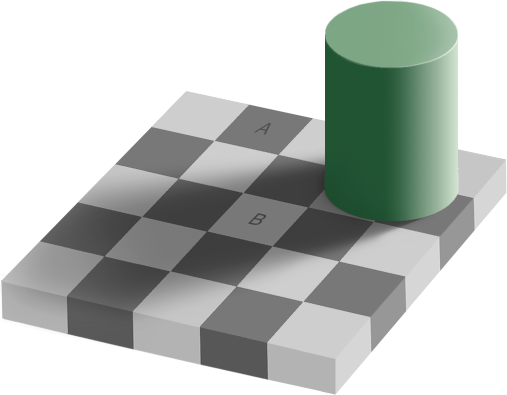

Much to our delight, our old friends Gene and Barbara Anderson were also there. In 2005 Lisa and I travelled to Turkey with them, visiting Istanbul and Konya. Gene is an anthropologist with prodigious erudition when it comes to recognizing plant and animal species, cooking medieval dishes, and much more. Barbara is a public health specialist whose idea of good time is taking students on public health tours in the poorest parts of Ethiopia or Cambodia. They'd moved up Seattle after Gene retired from the anthropology department here at UCR and Barbara left Loma Linda to become a associate dean at the the College of Nursing at Washington State University. Now she's retired too, and they're back.
We had dinner as kids came by trick-or-treating... but Lisa did
not answer the door and scare the wits out of them.


Categorification is getting really popular.
November 11, 2009

Long hidden in a Swiss bank vault, Carl Jung's Red Book is now available:
He later would compare this period of his life — this "confrontation with the unconscious," as he called it — to a mescaline experiment. He described his visions as coming in an "incessant stream". He likened them to rocks falling on his head, to thunderstorms, to molten lava. "I often had to cling to the table," he recalled, "so as not to fall apart".Had he been a psychiatric patient, Jung might well have been told he had a nervous disorder and encouraged to ignore the circus going on in his head. But as a psychiatrist, and one with a decidedly maverick streak, he tried instead to tear down the wall between his rational self and his psyche. For about six years, Jung worked to prevent his conscious mind from blocking out what his unconscious mind wanted to show him. Between appointments with patients, after dinner with his wife and children, whenever there was a spare hour or two, Jung sat in a book-lined office on the second floor of his home and actually induced hallucinations — what he called "active imaginations." "In order to grasp the fantasies which were stirring in me 'underground,'" Jung wrote later in his book Memories, Dreams, Reflections, "I knew that I had to let myself plummet down into them". He found himself in a liminal place, as full of creative abundance as it was of potential ruin, believing it to be the same borderlands traveled by both lunatics and great artists.
Jung recorded it all. First taking notes in a series of small, black journals, he then expounded upon and analyzed his fantasies, writing in a regal, prophetic tone in the big red-leather book. The book detailed an unabashedly psychedelic voyage through his own mind, a vaguely Homeric progression of encounters with strange people taking place in a curious, shifting dreamscape. Writing in German, he filled 205 oversize pages with elaborate calligraphy and with richly hued, staggeringly detailed paintings.

Jim Stasheff pointed out some really cool images of Mars taken
by the High Resolution
Imaging Science Experiment,
like these sawtooth
patterns in the carbon dioxide ice near its south pole.
November 19, 2009
Remember the Uighur uprising in northwest China?
One reason: the old town in Kashgar is being levelled.

For more photos of Kashgar, go here, here, and here. I would like to visit the place before it's completely modernized.
I fell in love with the Silk Route and cities in the Taklamakan Desert, like Kashgar, Khotan and Turfan, when I read this book:
You simply must read this you enjoy history, archaeology or adventure stories!
Here are some books by the original European explorers of the Taklaman Desert — the "foreign devils" who dug up and stole the buried archaeological treasures from this land. I'm going to get these, either from the UCR library or interlibrary loan...
Abstract: During the early decades of this century a handful of foreign explorers raced to remove wall-paintings, sculptures, manuscripts and other treasures from the lost cities of the Silk Road, the great trans-Asian highway that had once linked imperial China and distant Rome. The German archaeologist, Albert von Le Coq — one of the most successful of these explorers — discovered the huge, ninth-century Buddhist murals from the cliff-face monastery at Bezeklik. Buried Treasures of Chinese Turkestan, first published in 1928, is von Le Coq's account of the adventures and misadventures that beset him during his excavations along the Silk Road.
Abstract: A popular account of his first archaeological expedition into Central Asia from 1900 to 1901. It is his most charming and exciting book which is partly a witty and entertaining travelogue, partly a journal of exceptional archaeological exploration and partly Stein's proof to himself that his theory of the long lost Buddhist kingdoms of the Silk Road and the Serindian culture they supported was indeed correct. It is something of a detective story for it contains his own description of how he unmasked Dun Huang.
Wow — this site is packed with great stuff:
For example, it has a digital archive of rare books including all these books by Aurel Stein:
November 21, 2009
Together with a number of coauthors,
Jacquelyn Gill
of the University of Wisconsin
in Madison recently uncovered new evidence for the "Pleistocene
overkill hypothesis":
The last Ice Age - the Wisconsin glaciation, began in about 70,000 BC. The glaciers reached their maximum extent about 18,000 BC, with ice sheets down to what are now the Great Lakes. In places the ice was over 1.6 kilometers thick!
Then it started warming up. By 16,000 BC people started cultivating plants and herding animals. Around 12,000 BC, people of the Clovis culture came to the Americas — known by their distinctive and elegant spear tips, called Clovis points:
The culture then broke into several local cultures — the Folsom tradition, Gainey, Suwannee-Simpson, Plainview-Goshen, Cumberland point, and Redstone — roughly around the time of the Younger Dryas cold spell beginning around 10,800 BC. By about 10,000 BC the Ice Age was over, and a warm wet period called the Atlantic began. The first cities in the Old World date to around 7,500 BC; cities in the Americas seem to come much later.
At the time of maximum glaciation, there were three main refuges for life in North America. Biologists call such things "glacial refugia". The first was all the land south of the glaciers, including an "ice-free corridor" just east of the Rocky Mountains. The second was Beringia, a huge region made of what's now Yukon and Alaska, together with eastern Siberia. As you can see, the ocean was lower when more water was frozen up in glacier and the ice caps:
The third was the coastal plain region of eastern America, which is now submerged to form the continental shelf off the coast of New England and Canada. Besides these big refugia, there were also smaller coastal refugia and nunataks - mountains too high for the glaciers to cover them!
What was life like south of the ice sheets near the height of the last ice age? In the eastern half of North America there was tundra and spruce forest. Further west it was drier, except for a belt that got runoff from melting glaciers. West of what is now Minnesota it was too dry for forests - just grasslands. And where the Great Plains now reign supreme, there was a huge area of sand dunes!
There were many large mammals, almost all extinct now — and the mystery of their extinction is what the new paper tackles! Largest of these were the American mastodon and four species of mammoths, only two of which survived to the end of the ice age: the woolly mammoth in the tundra of Beringia, and the much larger Jefferson's mammoth in the central plains and the west. Both these went extinct around 9,000 BC, perhaps killed off by humans. But the ScienceNews article by Sid Perkins says that butchered mammoth bones have been found in Wisconsin archaeological sites dating back to 12,700 BC and 12,100 BC. And bones from butchered mammoths have been found with Clovis spear points in Wyoming and South Dakota.
There were giant beavers, 2.5 meters long and 220 kilograms (485 pounds) in weight. There were also giant ground sloths.
There was also the Mexican horse and western camel, Camelops hesternus:
Recently people have found spearheads dating back to 8,300 BC bearing protein residue from the Mexican horse! Indeed, this horse may have been hunted into extinction. Early Americans also hunted the western camel in Wyoming, as recently as 8,000 BC, which is around when they died out.
Caribou and tundra muskox ranged far further south than they do today. The tundra muskox probably crossed into Beringia around 90,000 BC. There was also a species of woodland muskox, now extinct. The elk, white-tailed deer, mule deer, bison and bighorn sheep that we know today were already widespread. But there were apparently no moose, except in Beringia.
The familiar cougars, bobcats and black bear were already here. Timber wolves were present but uncommon. Grizzly bears reached midlatitude America only after the ice sheets began to melt. But there was also the dire wolf, similar to the modern wolf but bigger and stronger. There was the sabertooth, about the size of a lion, with incredible teeth. There was its smaller relative, the scimatar cat... together with the American cheetah and the American lion, shown here:
All these are gone.
And then, there was the giant short face bear. This was the most powerful predator of the lot: a flesh-eater with powerful jaws, and probably quick on its feet, able to run down prey. It stood 1.6 meters (5.5 feet) at the shoulder. It weighed about 900 kilograms (almost a ton). You would not want to meet one of these:
How did all these animals die out? There are many possible explanations. The most obvious is climate change — until you realize that this latest Ice Age was not the last, and many of these animals seem to have survived through many previous glacial periods and interglacials! On February 13th I mentioned a recently popular theory: a comet collision!
Something dramatic happened about 12,900 years ago, and the continent of North America was never the same. A thriving culture of Paleo-Americans, known as the Clovis people, vanished seemingly overnight. Gone, too, were most of the largest animals: horses, camels, lions, mammoths, mastodons, saber-toothed cats, ground sloths and giant armadillos.However, as you can probably tell from what I wrote above, I consider the most plausible theory to be the Pleistocene overkill hypothesis: namely, that as humans moved into the Americas, they killed off all these large animals. And the new paper by Gill et al seems to support this theory.Scientists have long blamed climate change for the extinctions, for it was 12,900 years ago that the planet's emergence from the Ice Age came to a halt, reverting to glacial conditions for 1,500 years, an epoch known as the Younger Dryas.
In just the last few years, there has arisen a controversial scientific hypothesis to explain this chain of events, and it involves an extraterrestrial calamity: a comet, broken into fragments, turning the sky ablaze, sending a shock wave across the landscape and scorching forests, creatures, people and anything exposed to the heavenly fire.
Now the proponents of this apocalyptic scenario say they have found a new line of evidence: nanodiamonds. They say they have found these tiny structures across North America in sediments from 12,900 years ago, and they argue that the diamonds had to have been formed by a high-temperature, high-pressure event, such as a cometary impact.
Their idea was to look for spores of a fungus called Sporormiella in sediments that accumulated on lake beds in Indiana and New York. This fungus spends part of its life cycle in the dung of large herbivores — for example, these spores have been found in mammoth poop. So, Gill and company argue, the abundance of its spores can be used as a proxy for the abundance of large herbivores!
From this evidence, it looks like their numbers in Indiana began to drop around 12,800 BC. But it wasn't until 11,700 BC that the abundance of Sporormiella had crashed to 2% of its original level. Interestingly, this is when pollen grains from broad-leaved trees such as ash and ironwood began to show up in lake-bottom sediments in substantial numbers. Gill and company argue that this change was a result of the population crash of megafauna that ate the leaves of such trees.
One curious fact is that most sources seem to date the Clovis culture only back to 11,500 BC. According to Gill and company, that seems to be near the end of the collapse of megafauna in America!
Here's one possibility that leaps to my mind:
the archaeological record is too sketchy for us to see
the Clovis people first showing up around 12,800 BC. And here's
another: perhaps the first invading humans belonged to some pre-Clovis
culture! There seems to be some
evidence for this.
November 25, 2009
Can ants count? Maybe so!

Yes! If you don't believe me, look at this, and then read the Wikipedia article about this illusion invented by Edward Adelson of MIT.
For a related illusion, try this.
What I see are the current devastation, the frightening disappearances of living species, be they plants or animals. Because of its current density, the human species is living in a type of internally poisonous regime and I think of the present, of the world in which I am ending my days, as this world that I do not love
- Claude Levi-Strauss
© 2009 John Baez
baez@math.removethis.ucr.andthis.edu